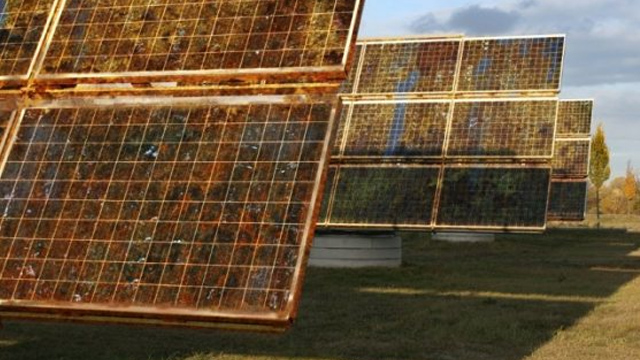The argument that solar energy is too costly for widespread adoption is slowly but surely coming apart at the seams, as creative financing models and technological breakthroughs make harnessing the sun’s power less expensive and more attainable for the average Joe. From the tech development category comes news of a breakthrough that could open the door to solar panels made from cheaper, more abundant materials.
Research from the Berkeley Lab and the University of California suggests that it is possible to make high efficiency photovoltaic panels from virtually any semiconductor, including metal oxides (aka rust).
The scientists behind the project have developed an electric field that gives the materials the the high-quality p-n junctions (the electro-chemical building blocks of solar panels) required to capture energy from the sun.
Creating the p-n junctions is a process called doping. The Berkeley research paper suggests that any semiconductive material, including cheap metal oxides, sulfides, and phosphides, can be successfully doped using an electric field.
“It’s time we put bad materials to good use,” said physicist Alex Zettl, who led the research.. “Our technology allows us to sidestep the difficulty in chemically tailoring many earth abundant, non-toxic semiconductors and instead tailor these materials simply by applying an electric field.”
(via VentureBeat)
Image: Rendering by Paul Takizawa
